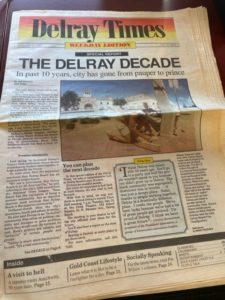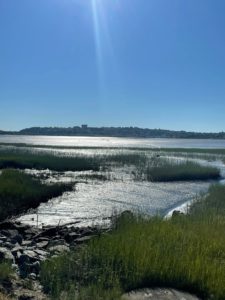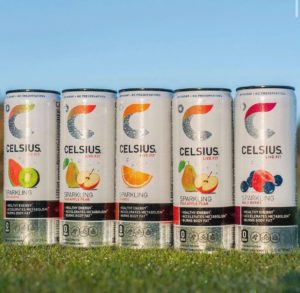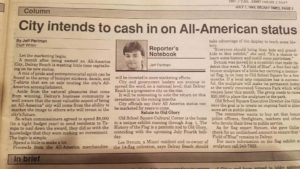
Chief Kerry Koen was an innovator. He built our modern day fire department in Delray and also led Boca Fire.
We lost a great man last week.
And the loss weighs heavy.
Even though we knew it was coming… the loss weighs heavy.
Former Delray Beach and. Boca Raton Fire Chief Kerry Koen passed away April 11. This is a tremendous loss for the thousands of people whose lives were directly impacted by Kerry and for the communities that benefited from his vision, courage, intellect and care.
Every time someone dials 911 in our community they benefit from Kerry’s contributions and ideas.
At heart, Kerry Koen was a teacher. He was also a protector and a public servant whose body of work made our hometowns safer for all.
**************
Four of us went to see Kerry a few hours before he left this world and we were grateful to have one last memorable conversation with a man who has occupied a big piece of our hearts for a long time now.
We sat bedside and he calmly told us he was dying. And when we left he said he would see us on the other side. He said he loved us and we said we loved and respected him.
In between, we shared stories, looked at his memorabilia and marveled at the breadth of his life and the strength he has exhibited through a series of health crises these past two years.
He was with us the whole time. It was a last gift, a last lesson in life, service and love.
To the end, our friend Kerry was involved in the communities that he loved–Boca Raton and Delray Beach. He sat with mayors and city managers, mentored fire chiefs and those climbing the ranks and worked hard to find a way to keep our cities on track. He told me he wanted to be relevant. And he was, until his last breath and now beyond because Kerry Koen’s accomplishments, lessons and example will inform leaders for years to come.
**************
We throw the word greatness around with abandon these days.
But Kerry Koen was the real deal. He was a great man. A great fire chief.
Some people come along in our lives and words just can’t adequately describe the impact they make on our world.
Kerry Koen was one of those men.
In the past few days, I’ve heard from firefighters, business and civic leaders and friends of Kerry who were touched in deep, lasting and profound ways just by having known him.
I’ve known Kerry for about three decades. He became a teacher, mentor, friend and sounding board.
We spoke frequently and toward the end we ended our conversations with “I love you’s.”
That’s not a common sign off for guys.
But Kerry, who always led with his heart, had grown even softer and more sensitive as he aged and as he gracefully navigated a series of health issues that would have leveled another man.
We saw his strength. We saw his resolve. We saw his fighting spirit and we saw his soft side as well.
It was all a gift. Kerry Koen was a gift. They don’t make them like this anymore and we are worse off as a result.
While Kerry led with love; love for his country, love for his firefighters, love for his cities, he also led with a sharp intellect.
He was well read. He was a deep thinker and someone who saw trends before anyone else.
He was the smartest person I’ve ever met when it comes to understanding what makes cities work. He saw the big picture and shared his knowledge generously. If you were smart enough to listen you got a master class every time you spoke with him. Every single time.
He loaned me books and articles. Showed me photos that he took and those that he loved. He invested in me as a friend and as someone active in the community. We worked well together when I was on the City Commission. But we grew closer after I left.
I loved him.
The great ones leave their marks on our hearts and our minds. If we are lucky they arrive in our lives and in our communities and if we are smart we listen, learn and appreciate.
I did.
I listened. I learned. And I’m thankful for it all. I’m not alone. Kerry touched so many of us in just this way. I’m thinking of those people too today, because I know losing Kerry weighs heavily on their hearts.
And I’m thinking about his lovely wife Lynne as well. Lynne is so very strong. So kind. So loving. What a team these two have been. How lucky we are to know them and to love them.
*********
I wanted to share the message shared by our fire union. I thought it was perfect. Here it is.
With heavy hearts, IAFF Local 1842 honors the life and legacy of retired Fire Chief Kerry B. Koen, one of the most influential and respected leaders our department has ever known.
Chief Koen didn’t just lead Delray Beach Fire Rescue, he built it. He laid the foundation for the professional standards we stand on today and gave generations of firefighters the opportunity to wear this badge with pride. For many of us, he was the one who gave us our chance to serve. That kind of belief changes lives, and it changed many of ours. He taught us what service truly meant—not just responding to calls, but showing up for your crew, your city, and your values, day in and day out.
He wasn’t interested in politics or personal praise. He was interested in making things better…better training, better equipment, better leadership, and a better future for those who answered the call. He gave a voice to firefighters and fought for our safety.
Chief Koen led with heart and backbone. He didn’t flinch in the face of hard decisions, and he didn’t hide when things got tough. He showed us what real leadership looks like: calm in the storm, humble in success, and relentless when it came to protecting both his firefighters and his community.
We’ve lost more than a former chief, we’ve lost a pillar of our department and community. But his legacy lives in every firehouse, in every crew, and in every firefighter who still strives to live up to the standard he set.
Rest easy, Chief. We’ll take it from here.
Honoring Perry
The City of Delray Beach gave much deserved recognition to Delray Citizens for Delray Beach Police founder Perry DonFrancisco last week.
Perry, who ran the police support organization as a labor of love for four decades, recently stepped down and handed the reins to the very capable Chuck Halberg. He leaves behind a long legacy of caring for the men and women of the Delray Beach Police Department and the broader community as well.
I’ve written extensively of my admiration for Perry in the past, but I couldn’t let the occasion pass without saying that people like Perry are rare finds in life. He’s been Delray Beach’s best friend—there in every season, through every storm, a beacon of decency, civility, grace and kindness. He has worked a whole lot of behind-the-scenes magic over the years, quietly solving problems, mediating disputes, providing invaluable guidance and leading by example.
Whether you know the man or not, please trust me when I tell you that if you live, work or play in Delray, you have benefited from his hard work and steady presence.
Perry Don Francisco is the definition of a great man and a great citizen.









